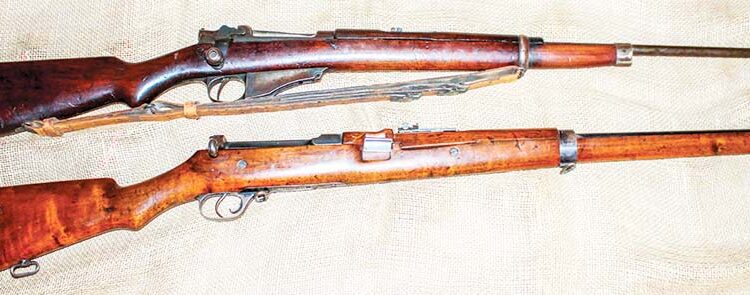By Seth R. Nadel
The United States was home to the bolt action military rifle from 1903 until the end of World War II in 1945, when they still dominated the hunting market. At that time, most bolt action (or “turn bolt”) rifles required four separate movements – rotate the bolt up, pull it to the rear, push it forward, and rotate it down. However, on two separate occasions our troops were issued straight-pull bolt action rifles – pull the bolt straight back and push it straight forward. One was a main battle rifle, the other was for training only.
Straight-pull rifles were an offshoot of turn bolt rifles around the turn of the the19th century. They were adopted by several European countries, with their longest term in service being with the Swiss, who used the M1899 (and other variants) into the 1970s. A major benefit was that the straight-pull rifles were faster to shoot for partially trained troops. One can still see the occasional Swiss rifles and carbines for sale, desirable for their accuracy at long range.
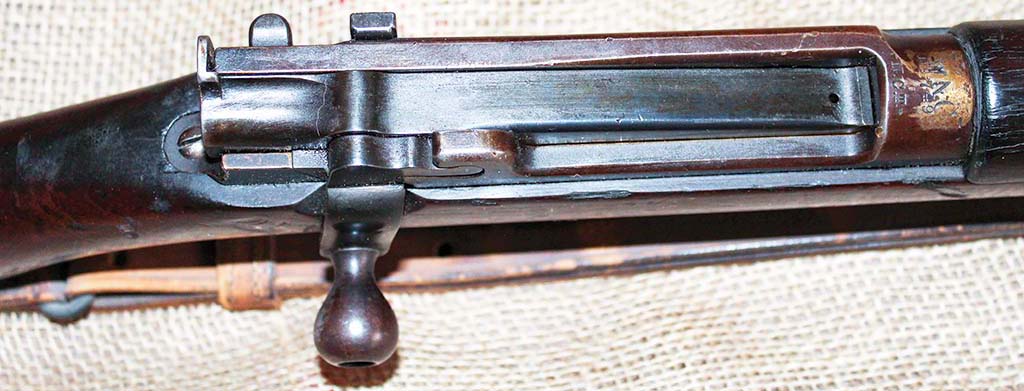
Army vs. Navy
As always, there has been a rivalry between the U.S. Army and Navy. In the late 1800s this rivalry extended as far as their choice of rifle. The Army considered various contenders for the United States’ first magazine-fed bolt action rifle, ultimately settling in 1892 on a Norwegian design, the Krag. Its cartridge was our first small-bore jacketed bullet design. The 30-40-220 – 30 caliber was loaded with 40 grains of black powder, and topped with a 220 grain, round-nosed, jacketed bullet. Its commonly called the 30-40 or 30-40 Krag.
Of course, the Ordnance Department had to “improve” the rifle’s action by adding a magazine cutoff and changing the opening of the magazine from folding toward the front to folding down. This neatly prevented the use of stripper clips for loading, and became important in the Navy adoption of the Magazine Lee-Enfield (or MLE) Rifle. The Krag’s magazine cutoff design dealt with the usual Ordnance concern that the troops would “waste ammo by shooting too quickly”! It originally required an Officer to allow fire from the magazine, otherwise, it was used as a single loading rifle. Magazines were loaded with single rounds drawn from a cartridge belt or box carried on the belt. This design lasted through the 1903 rifles until the M1 semi-automatic completely replaced the 1903 after World War II. After all, if the troops fired too fast, Ordnance would have to have more wagons to bring more ammo to those on the sharp end. In fact, until World War I, the troops had to turn-in and account for every fired cartridge case!
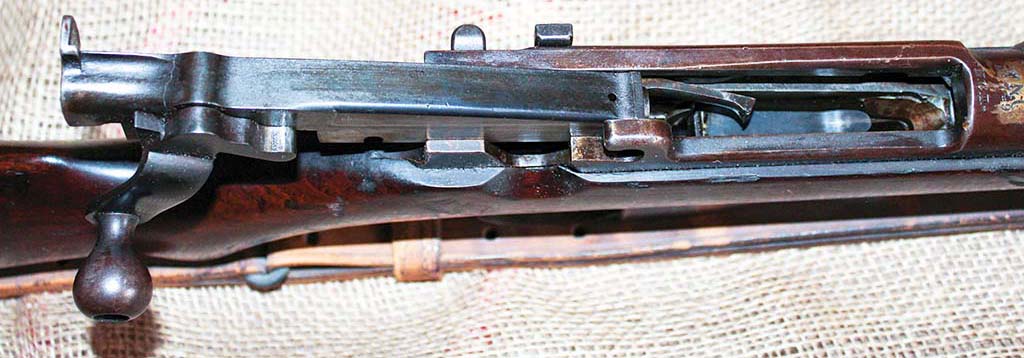
With the adoption of every service rifle since, including the M16/M4, the exact same arguments were heard: “The new rifle lets the troops shoot too fast!”, and “The new rifle is not as accurate as the old rifle! It was good enough for me 30 years ago, we don’t need any new, fast shoot’n, inaccurate rifle!”
The Navy chooses a different course
The Navy decided to go its own way, looking for and finding “something different”. James Paris Lee was a small arms inventor whose ideas for rifling were adopted by the British. Different models and marks of Lee-Enfield served the British in both World Wars. Lee’s magazine design was adopted by most everyone. He had come up with a clever rifle where the bolt was pulled straight to the rear and shoved straight forward. The bolt was locked into the receiver by a lug and cammed out of the lock by angles that caused the back of the bolt to tilt upward on the rearward stroke. These same cam surfaces cammed the rear of the bolt back down on the forward stroke.
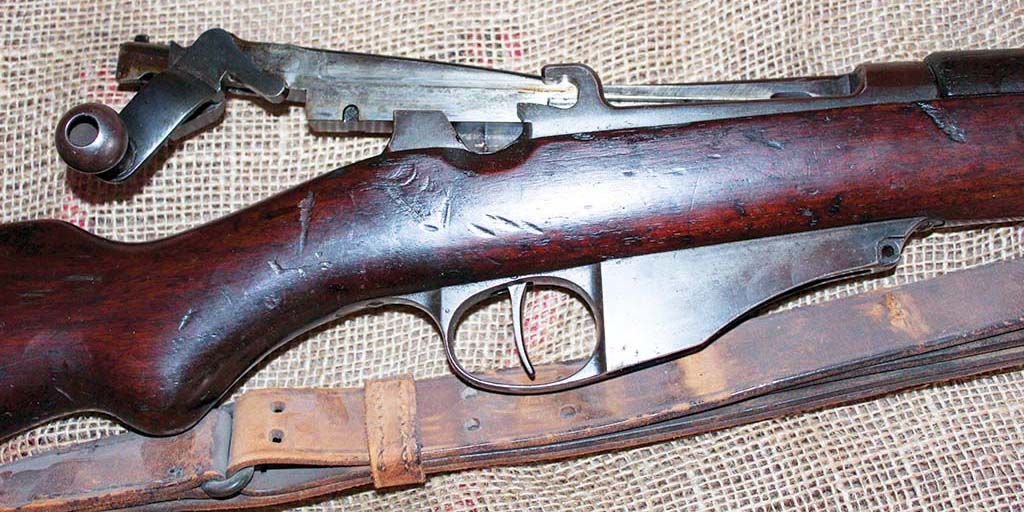
The Lee M1895 was adopted in 6mm (a concept we seem to be revisiting) and fed via a two-piece En Bloc five-round clip. The entire assembly was entered into the magazine, and when the last round was loaded, the clip and a separate spring fell out an opening in the bottom of the rifle. This introduced two problems: dirt entering the action via the large hole in the bottom; and the little spring of twisted wire getting lost, preventing clips from being reloaded with loose rounds in the field. The Navy had specified these clips were for one-time use, which was a problem for Marines who practiced working the action with dummy rounds and needed to reload their clips.
Of course, the biggest problem was ammunition supply. The Army made its own ammunition, while the Navy contracted-out its ammo. The 1892 Navy Caliber Reduction Board concluded that there was no need for using the same ammo as the Army. As to landing parties, “These would be only Naval actions of limited extent and duration, so there was no need for interchangeability of ammunition as joint operations with the Army were highly unlikely.” This quickly proved wrong, as the Spanish-American War of 1898 had both Army and Marines landing, and neither group could use the other’s ammo! Interestingly, it was not an issue for the Marines and Navy in the Legation Siege in Peking China in 1900, as no Army troops were present until the end. But this was the last combat action of the 6mm Lee Navy, and the start of interoperability between the services. The Navy was already re-arming with 30-40 Krag rifles, they had just not yet reached China.
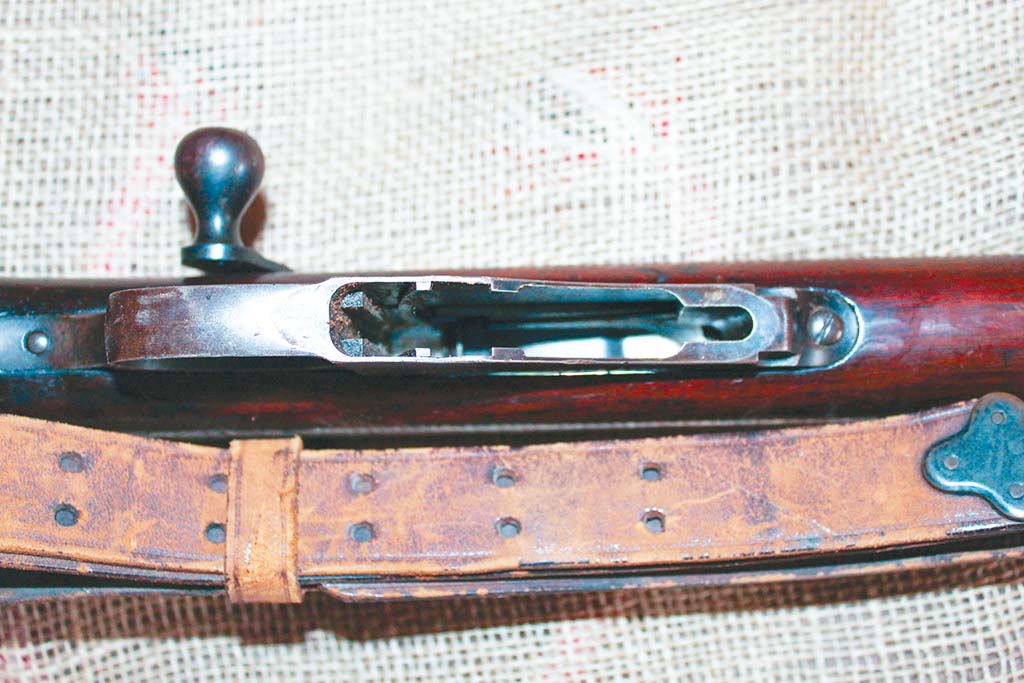
Enter the ROSS
Our entry into World War I meant a massive increase in the number of troops, far beyond the output of the Springfield Armory Model 1903 rifles. And such production was not easily ramped up, so volunteers were literally training with brooms! There simply were not enough rifles for training, even after all the war reserve 30-40 Krags were issued.
Canada, as a member of the Empire, was already involved in the war and learned some harsh lessons of their own. Sir Charles Ross had come to Canada from Scotland and opened the country’s first rifle factory. He designed and made a straight-pull rifle in .303 British, the MKII Model 1905, which established a fine record for accuracy. Of course, national pride required that Canada adopt this rifle for its small army. It evolved into the MK III Model 1910 by using a rotating bolt head to lock the action. When the call came, the Ross Rifle went to the trenches and it was there that two major defects came to light.
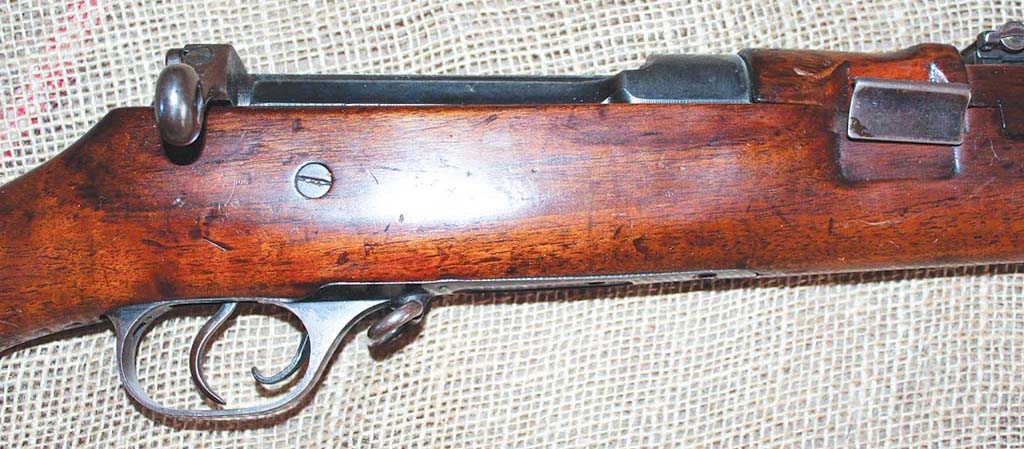
The rifle’s sensitivity to mud was the lesser of the two faults. It is one thing to wander about the countryside with your hunting rifle, but quite another to be, as one famous text calls it, “Eye Deep in Hell!”. The trenches of WWI were deep, and the weather was wet. The mud was deep enough to swallow rifles, men, and even artillery pieces. The Ross, while still very accurate, could not be kept clean enough to fire by the troops. A limited number were retained for snipers, and the rest were replaced by the #1 Mk III Enfield, also in .303 British.
The greater fault with the Ross was a design flaw, and it was a killer. A poorly trained soldier could, and did, reassemble the bolt incorrectly. Should he then fire a round, the bolt would blow back out of the receiver, killing the soldier instantly. Legend has it that a senior Sergeant Major declared this was not true. Before an assembly of senior officers, he intentionally misassembled a Ross, shouldered the rifle, and upon firing a round, was killed.
One country’s trash is another country’s treasure
This left Canada with a surplus of rifles suitable for drill purposes, but not for firing. Meanwhile, the US had a surplus of green troops to drill, but no rifles for them to drill with. Some unsung soldier put 2+2 together, and the US bought 20,000 .303 Ross MkIII M1910 rifles for drill with no intention of firing them. One of the oddities of the day was these rifles did not bear a serial number, and they had to be marked as US property. The markings were stamped into the stock and even onto the bayonets, and our troops learned the drill requirements.
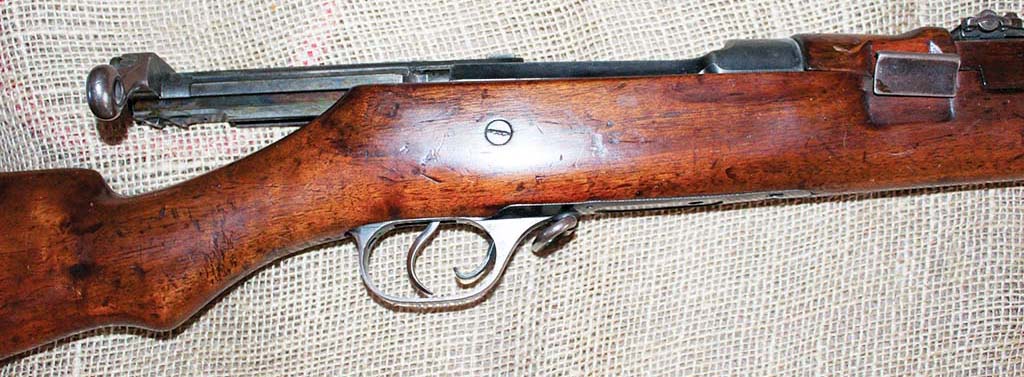

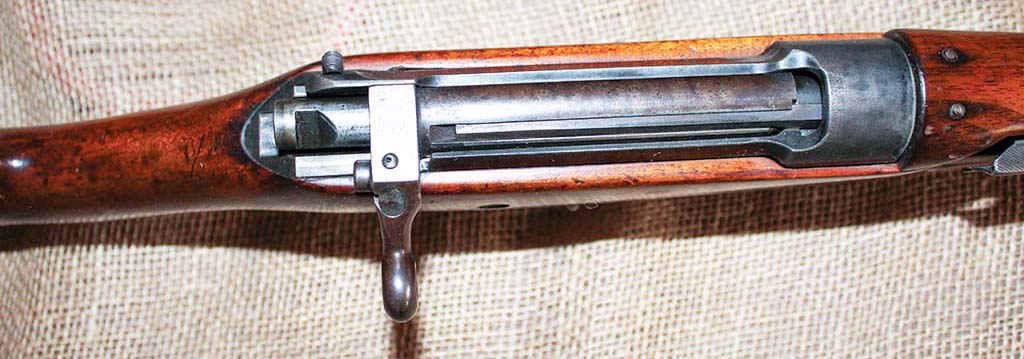
The Ross stays stateside
As far as is known, none of the Ross rifles went overseas with US troops, due to another smart move by some unsung ordnance officer. The British had been producing their new rifle, the Pattern 1914 (or P14), originally in a smaller .276 bore. When they entered the war, they moved production to the US and contracted with Winchester and Eddystone Arsenal to make the rifles in .303 caliber. Some Ordnance officer got his hands on one and realized that with a different chambering reamer, the same rifle could be made in 30-06, our standard round. A deal was struck, and more American troops went “Over There” with the Model 1917 or ‘U.S. Enfield’, then with the Model 1903. As a side note: due to dimensional differences in the rounds, this is the only US service rifle with a six-round magazine, and it does not appear in the issue manual.
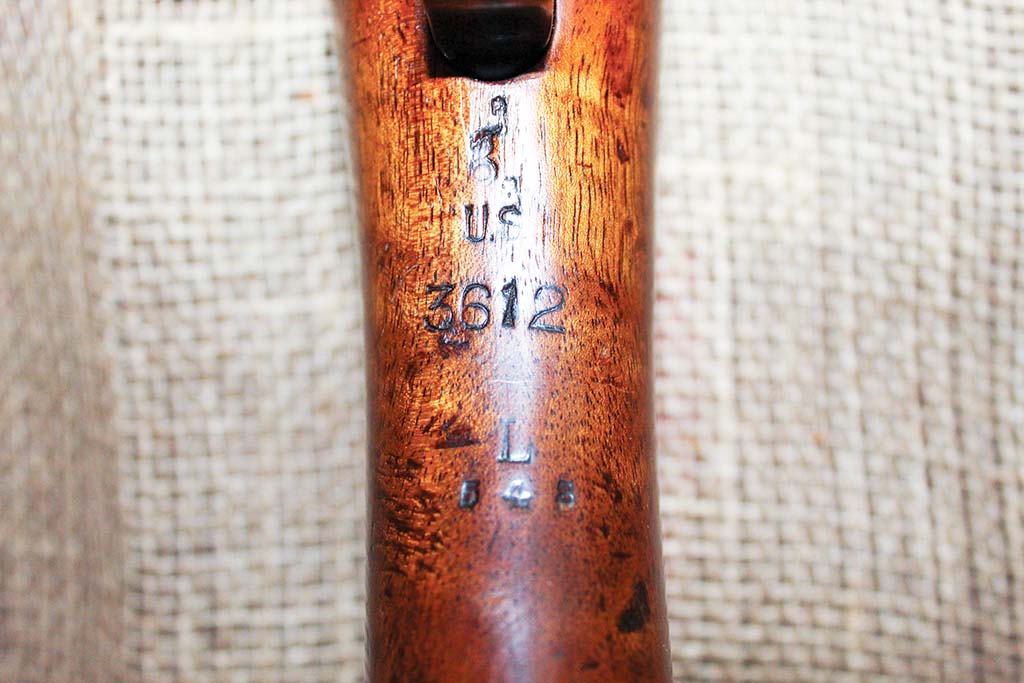
Both the Lee M1895 Navy and the Ross Mk III M1910 are rare collector’s items today as the only straight-pull rifles adopted by the US!
Sources:
- Small Arms of the World
- Sir Charles Ross and his Rifles
- The Military Arms of Canada
- The Winchester-Lee Rifle
| This article first appeared in Small Arms Review V25N4 (April 2021) |



